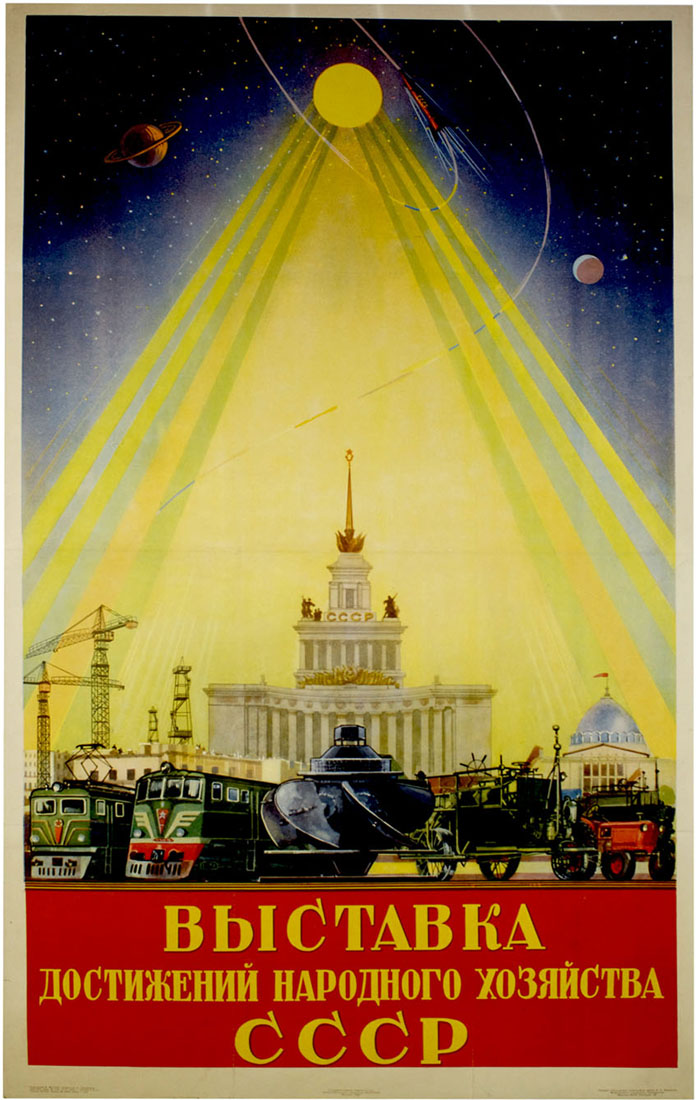
Exposición de los logros de la economía nacional de la URSS
Número de Cartel: PP 097
Información sobre el cartel: En 1959, el recinto de la Exposición Agrícola de toda la Unión (VSKhV) recibió el nombre de Exposición de los Logros de la Economía Nacional (VDNKh). Entre los años 1991 y 2014, este recinto pasó a llamarse Centro Panruso de Exposiciones (VVC); sin embargo, en 2014 volvió a ser conocido con el acrónimo VDNKh.
Tamaño: 48x31
Tipo de cartel: Litografía y Offset
Fecha de publicación: 1959
Editores: Editor A. Pashenkov
Información técnica: [Approved for printing] March 17, 1959; Publication No.1- 63; Volume 1 sheet of paper; Order No. 2924; Price 1 ruble
Ediciones: 75,000
Número de Glavlit: Sh01253
Fuentes: Magnúsdóttir, R. (2019). Enemy Number One: The United States of America in Soviet ideology and propaganda, 1945-1959. New York: Oxford Univ. Press.
En el catologo: PP 097 Economy
Artista: Mukhin, Boris Aleksandrovich — Мухин, Борис Александрович
Imprenta: 1st Exemplary Typography Workshop named for A. A. Zhdanov, Moscow — 1-я Образцовая типография им. А.А. Жданова
The 1st Exemplary Typography Workshop was named in honor of Andrei Alexandrovich Zhdanov (1896-1948), a Soviet military leader and a senior member of the Politburo who died in 1948. Reportedly, Andrei Zhdanov controlled the atomic espionage division of the USSR and he was Josef Stalin's closest confidant. Historically, the 1st Exemplary Typography Workshop began as the Sharapov-Sytin Partnerhip, a printing workshop formed before the Russian Revolution. Ivan Dmitrievich Sytin (1851-1934) was the son of a peasant. ...
Leer más...
Editorial: IzoGiz (State Publishing House of Fine Art), Moscow — Изогиз (Государственное издательство изобразительного искусства), Москва
The history of IzoGiz begins with the formation of Ogiz, the Association of the State Book and Magazine Publishers. In 1930, the Sovnarkom of the Russian Socialist Federative Soviet Republic established Ogiz to centralize publishing under a monopoly in order to eliminate duplication of printed material, to streamline and control publishing production and its output, and to create a base for marketing books, training and technical manuals. In 1931, the Central Committee of the USSR ordered certain ...
Leer más...